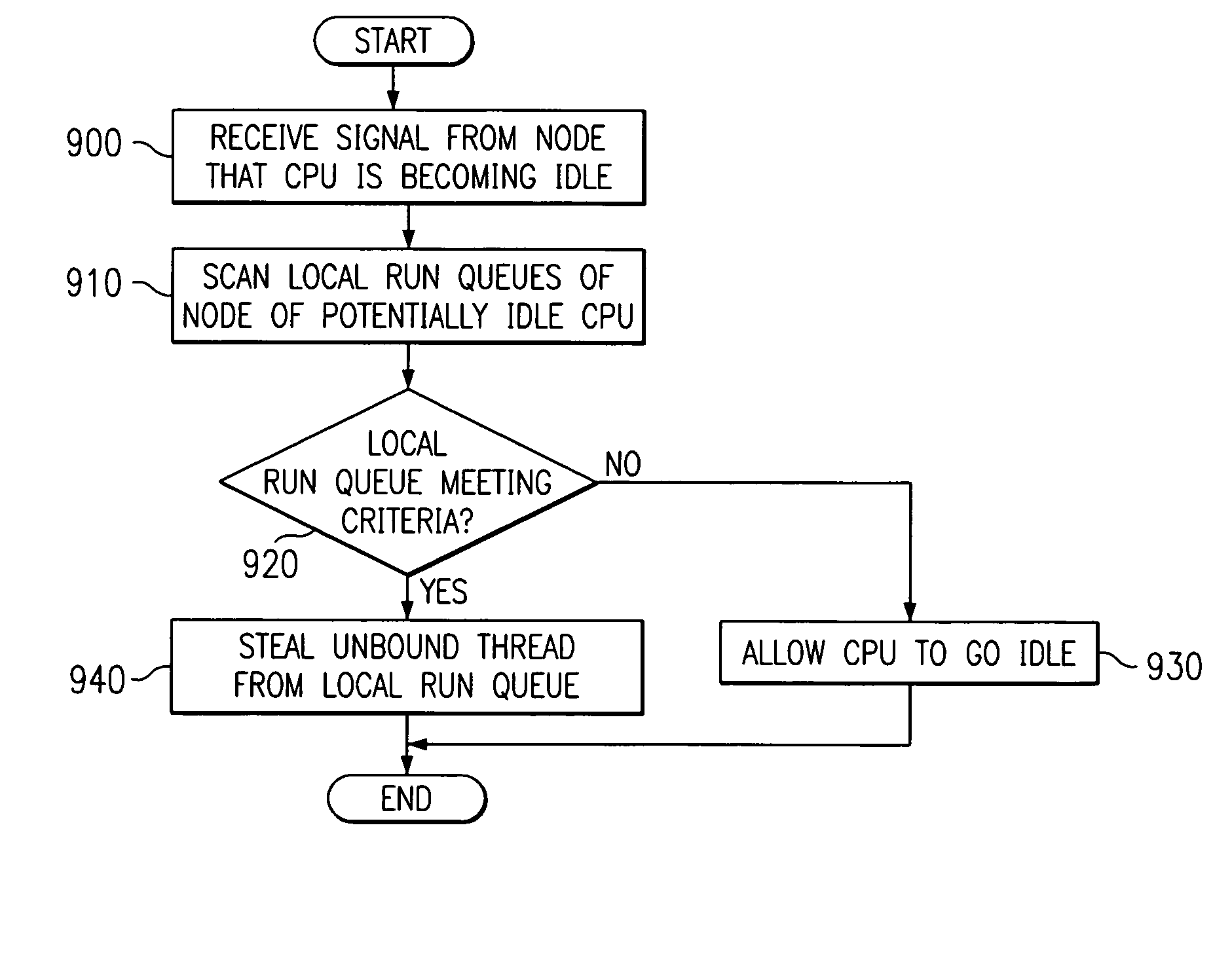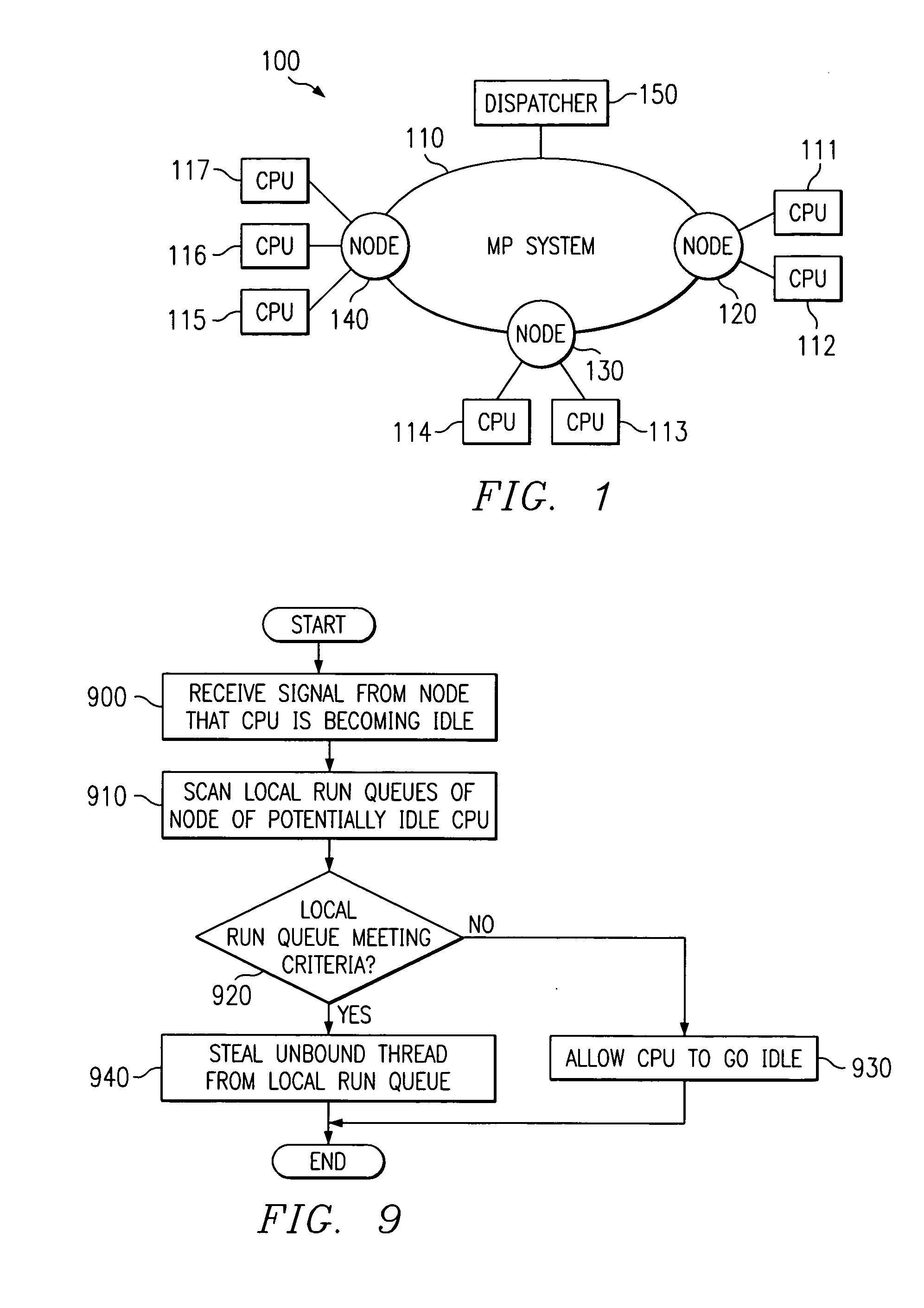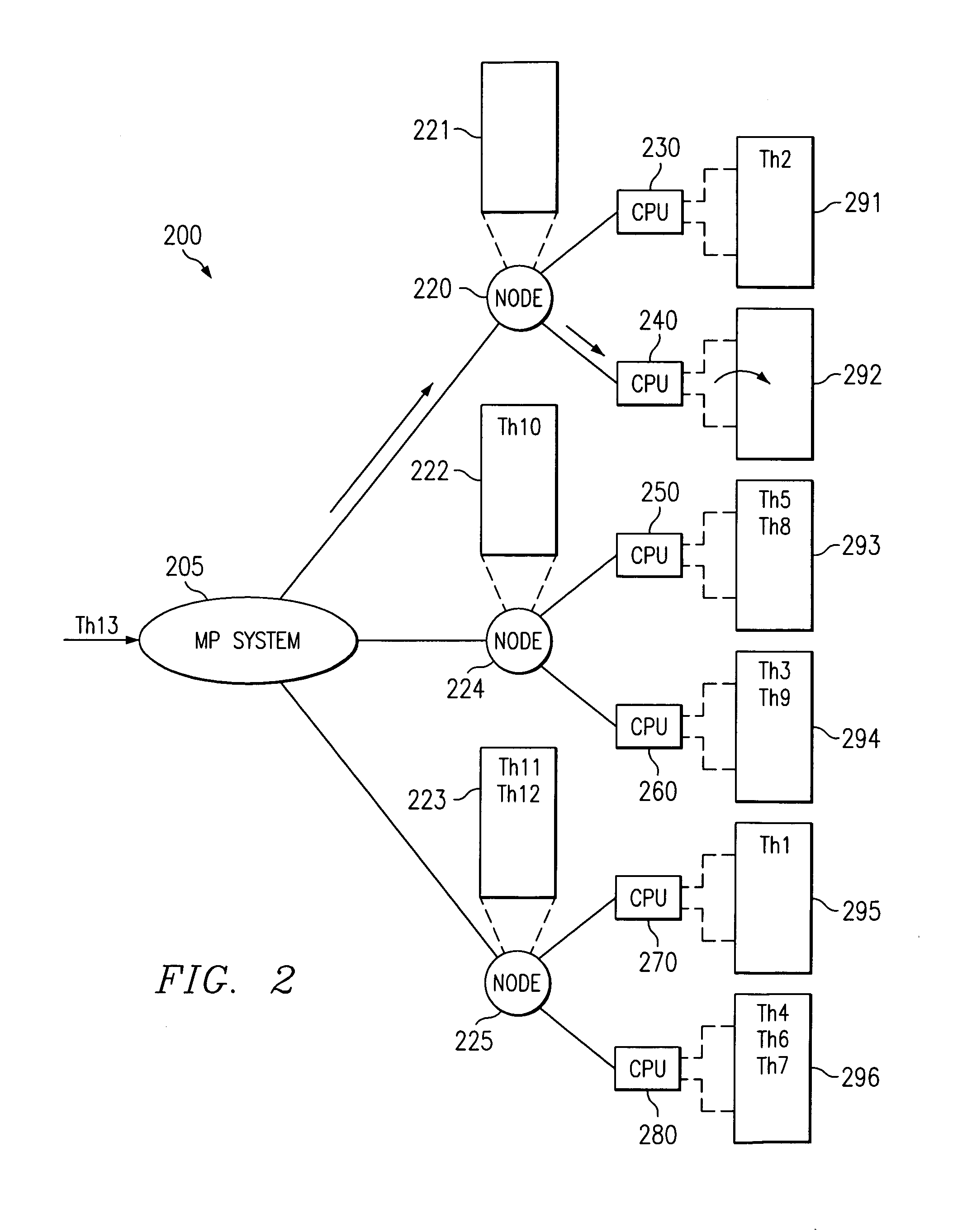Method for determining idle processor load balancing in a multiple processors system
a technology of multiple processors and load balancing, applied in the direction of multi-programming arrangements, program control, instruments, etc., can solve the problems of centralized queue becoming a bottleneck for threads, processors may become overloaded while other processors are relatively idle, and processors may become overloaded
- Summary
- Abstract
- Description
- Claims
- Application Information
AI Technical Summary
Benefits of technology
Problems solved by technology
Method used
Image
Examples
Embodiment Construction
[0026]FIG. 1 is an exemplary diagram of a multiple run queue system 100 in which the present invention may be implemented. As shown in FIG. 1, the system 100 includes a multiple processor (MP) system 110, a plurality of CPUs 111–117 organized into nodes 120–140, and a dispatcher 150.
[0027]The MP system 110 may be any type of system having a plurality of processors, such as CPUs 111–117. The CPUs 111–117 are any type of processing device capable of processing assigned data processing jobs. The CPUs 111–117 are organized into nodes 120–140. The nodes 120–140 may not be actual devices in themselves, but may be considered representations of the partition of CPUs 111–117 into groups. Thus, for example, CPUs 111 and 112 are associated with node 120, CPUs 113 and 114 are contained in node 130, and CPUs 115–117 are contained in node 140.
[0028]The dispatcher 150 performs load balancing of the jobs among the nodes 120–140 and the CPUs 111–117. Although the dispatcher 150 is shown as a single ...
PUM
 Login to View More
Login to View More Abstract
Description
Claims
Application Information
 Login to View More
Login to View More - R&D
- Intellectual Property
- Life Sciences
- Materials
- Tech Scout
- Unparalleled Data Quality
- Higher Quality Content
- 60% Fewer Hallucinations
Browse by: Latest US Patents, China's latest patents, Technical Efficacy Thesaurus, Application Domain, Technology Topic, Popular Technical Reports.
© 2025 PatSnap. All rights reserved.Legal|Privacy policy|Modern Slavery Act Transparency Statement|Sitemap|About US| Contact US: help@patsnap.com



